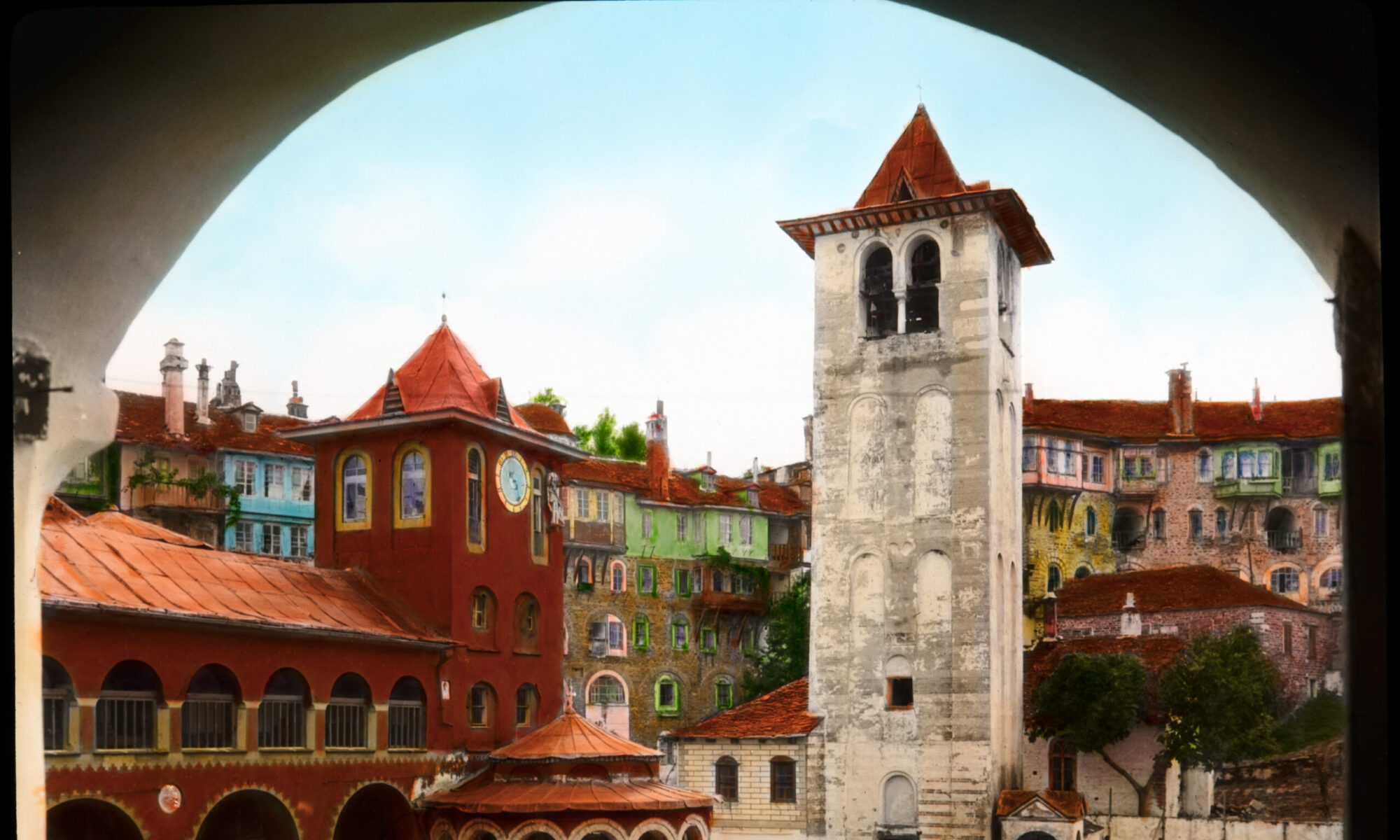Call for Papers:
The Athonite Collections and Their Challenges: Open Access, Traveling Exhibitions, and Digital Surrogates
Symposium, September 25-26, 2026, Princeton University

Mount Athos holds a wealth of treasures that illuminate the expansive social network of the medieval and modern Christian world. This holy peninsula has shaped the history of Greece, the Mediterranean, Europe, and beyond. Travelers, pilgrims, and scholars have been attracted to Mount Athos throughout the centuries, illustrated by Princeton’s many collections related to the subject.
This symposium aims to tackle the challenges of studying the Athonite collections (including religious icons, liturgical objects, manuscripts and other documents containing valuable insights into the past) and other such religious repositories. These are challenges that restrict scholarly inquiry and therefore limit the development of new perspectives and the full appreciation of the unique collections and the history of the communities themselves.
The reservations of monastic communities over the public accessibility and display of their sacred objects are well known and understandable in view of the centuries-old traditions the monasteries are safeguarding. This symposium seeks to find new ways forward in reconciling these conflicting views, addressing questions such as: how could institutions preserve the agency of the monastic community whilst promoting accessibility and scholarship? Could openly accessible digital archives be fostered while still respecting the ownership of the living religious community?
A key aspect of Athonite collections is that many of its treasures have been scattered throughout the centuries beyond the Holy Mountain. Could openly accessible digital collections of this diaspora of objects exist while still acknowledging the community’s rights? And how can one proceed to untie the ownership of the object versus the ownership of its image (and moving image)? In the case of Mount Athos, this issue is especially relevant as access to the Holy Mountain is prohibited to women. Female scholars thus heavily rely on connections beyond the borders of Mount Athos to access content to pursue their research, study, and teaching.
The digitization of ecclesiastical treasures with historical, artistic, and religious value has created new possibilities for preservation, documentation, and dissemination of the rich Athonite collections. Monastic communities around the world have engaged digitization efforts with differing levels of success. Access to digital surrogates can also help with the limitations that Athonite treasurers pose when discussing international exhibitions. On very few occasions have these items left their treasury or library and even less so, the Holy Mountain itself, seriously restricting their educational, social, and cultural role. Going against the notion that the placement of religious artefacts within a museum context is inappropriate, is it possible instead to conceive of digital surrogates, and their context, as a vehicle to communicate the importance of these objects? Can new digital technologies effectively increase the awareness and reach of these collections and their contexts? Including their spiritual significance?
Possible presentation topics include, but are not limited to:
- The balance between accessing restricted archives while still respecting the community of ownership
- The use of digital surrogates of analog collections as a way to establish access
- The limits that digital surrogates present in regard to ownership rights
- The challenges of exhibiting such archives and collections
- The diaspora of objects from such communities and its implications
- The impact of the physical exclusion of female scholars
- Specific case studies tied to Athonite collections beyond the Holy Mountain
This event is being organized in the context of the Connecting Histories. The Princeton and Mount Athos Legacy project, which aims to engage and bring awareness to the rich, complex, and remarkable holdings related to Mount Athos on the Princeton University campus. For this reason, most of the event and the papers will focus on Mount Athos; however, we will also consider papers that bring in comparative material from other communities that deal with similar issues, creating a conversation with the Athonite material.
The Princeton Institute for International and Regional Studies (PIIRS) has offered generous funding for this symposium.
Proposals for 30-minute papers (in English) should include a title, an abstract (max. 250 words) and a CV, and be sent to gearhart@princeton.edu and marossi@princeton.edu by December 20, 2025.
